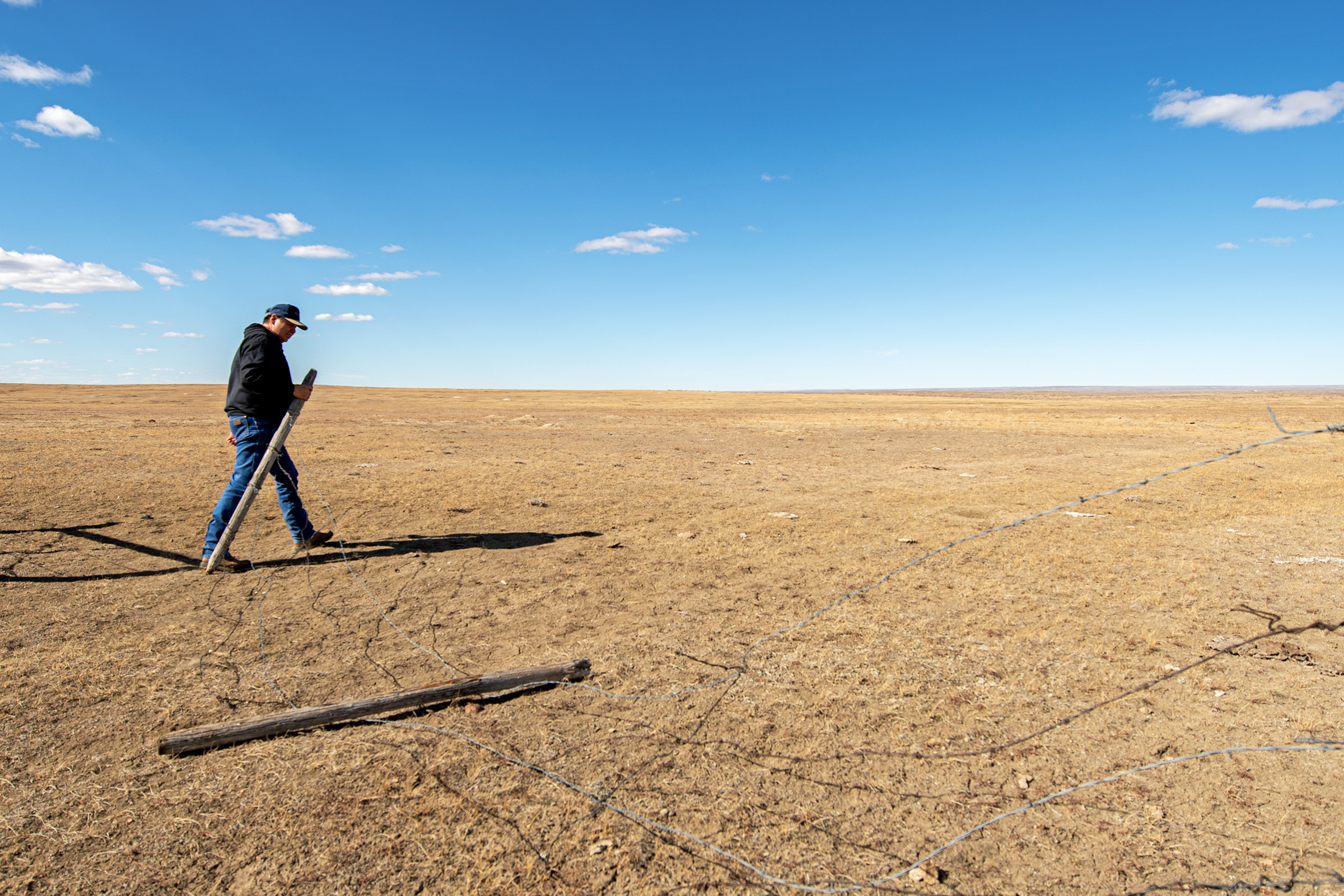
The Price to Pay
A back-breaking business gets tougher amid drought
Story by Jacob Owens, Photos by Kevin Moriarty
It’s a tough business decision. Standing by on a breezy March afternoon on the Montana Hi-Line, Joey Kill Eagle loaded 33 head of his cattle into an aluminum livestock trailer. Once they are sold, his herd will be at a historic low.
It was an inevitable decision for the rancher. Years of drought had driven down water availability and sent hay prices soaring in an already tumultuous industry. Drought has become the latest issue and is driving ranchers to sell. His hand had been forced. Kill Eagle, 59, with 25 years of ranching experience, couldn’t sustain his existing cattle herd.
“It’s just a business decision you have to make, to do what you got to do and go in the direction that is best at the time,” he said.
Kill Eagle, who is both Aaniiih and Nakoda, measures his words carefully as he talks of rebuilding the herd when things improve. He would rather remain hopeful. The year is young and the weather could improve.
1. Joey Kill Eagle drives his GMC truck through a field where he keeps his cattle during the winter months. 2. Jake Crasco drives up a hill to feed a large round bale of hay to his 225 head of cattle.
But scenes like this will only become more common as drought strengthens its grip on Montana’s Hi-Line, affecting areas like the Fort Belknap reservation, home to the Aaniiih and Nakoda tribes. Drought means less water. It also means more grasshoppers – a lot more. Collectively, this leads to hay shortages, compelling ranchers to thin their herds.
Ranchers throughout northcentral Montana, including those on the Fort Belknap reservation, are re- porting dramatically reduced herds. Some ranchers, though generally optimistic, harbor concerns about the future of their iconic way of life.
A business model reliant on plans is finding it must constantly reshuffle them.
After a devastatingly dry 2021, ranchers on the reservation may be in for another rough year. The only guarantee for the state’s ranchers is more change.
***
The Crascos and their century-old ranching business are caught in the crossfire, with their herd of roughly 500 cattle that would be around 1,000, had it not been for the drought.
Juanita Cole Crasco and her husband Jake Crasco ranch in the southeastern portion of the reservation, near the Little Rockies. Their home sits on a plot of land dotted with memories of the past, including the charred wooden remains of the home Jake grew up in.
The land was allotted to the Crasco family in 1921, and Jake has only been away from it for two of his 68 years.
Last June, Juanita Cole Crasco, “Cole” being her maiden name, departed the ranch for some consulting work in Browning. That morning, her apple tree near the porch was full of pale pink blooms and little green apples were emerging from its branches.
When she returned two days later, she remembers feeling sick to her stomach at what was left of the once-beautiful apple tree.
“I was unloading stuff and I just happened to look up, and I looked at my tree and I said, ‘What in the hell?’” Juanita, a member of the Aaniiih Tribe, said.
The tree now stood stripped to its bare brown branches with a few budding green apples left hanging, naked without their blossoms. She said the brown and black plywood panels in her courtyard swarmed with green and brown grasshoppers of varying sizes.
1. Jake Crasco stands on the back of his feeder truck while looking over his grazing cattle. As drought continues to ravage Fort Belknap, ranchers like Crasco have been forced to shrink their herds. 2. Cattle drink from a stock tank supplied with water from Crasco’s well. Crasco has had to find solutions to increased drought on the Fort Belknap reservation.
Grasshoppers wreaked havoc across the reservation, leaving some areas relatively untouched, while wiping out much of the year’s hay crop in others. The invading swarms go “hand in hand” with drier conditions, according to Tim Vosburgh, a wildlife biologist at Fort Belknap’s Tribal Fish and Wildlife Department.
Last year, one of Kill Eagle’s hayfields was decimated by grasshoppers. Swarms chewed through the field, leaving only hay stalks that stood just a few inches high. Nothing was left to harvest.
The field was ravaged to the point that it resembled one of Kill Eagle’s successfully harvested golden hayfields along People’s Creek. Kill Eagle’s fields are flood-irrigated by the creek, as is evident by the orange outlines of willows and larger gray cottonwood skeletons that occasionally slice through the fields.
While rudimentary, his flood irrigation outlasted last summer’s drought, but dryland hay fields to the south were not so fortunate.
“I went out for the Fourth (of July) and there wasn’t any hay bales out there,” Kill Eagle said. He recalled thinking, “Man, these guys really ended up with nothing.”
***
Rolling yellow pastures sit below the Crasco complex. Yearlings occupy one pasture and 2-year-old heifers occupy another. Jake parks his black bale feeder truck in a third.
The cattle there are 4-to-8 years old. Soon Jake cuts a dry bale of hay loose. Typically, he’d roll it out like carpet, but the hay is so dry that it falls loose when its binding is cut. To spread the hay out for feeding time, he boards a John Deere tractor, as 225 head of cattle eagerly approach it.
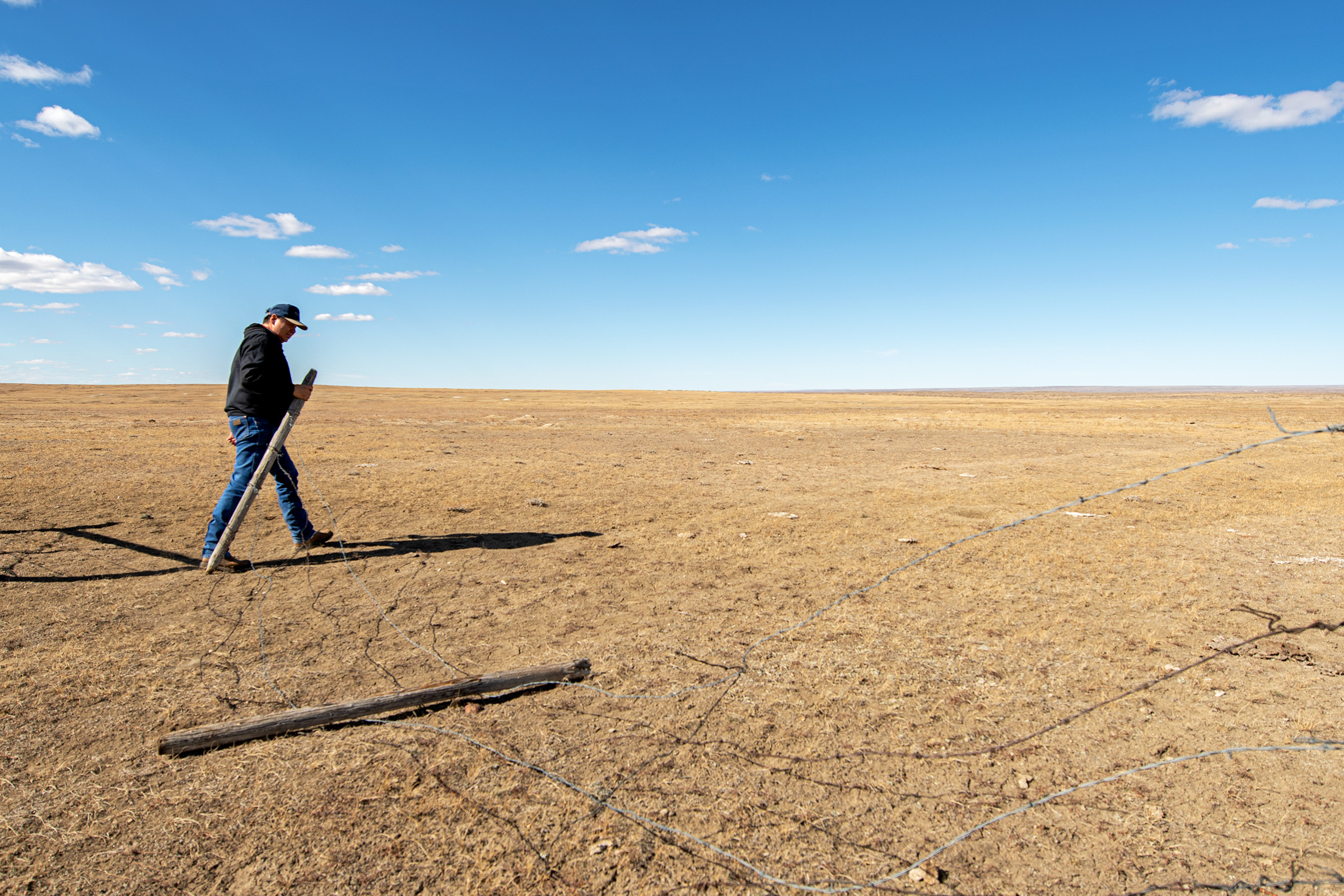
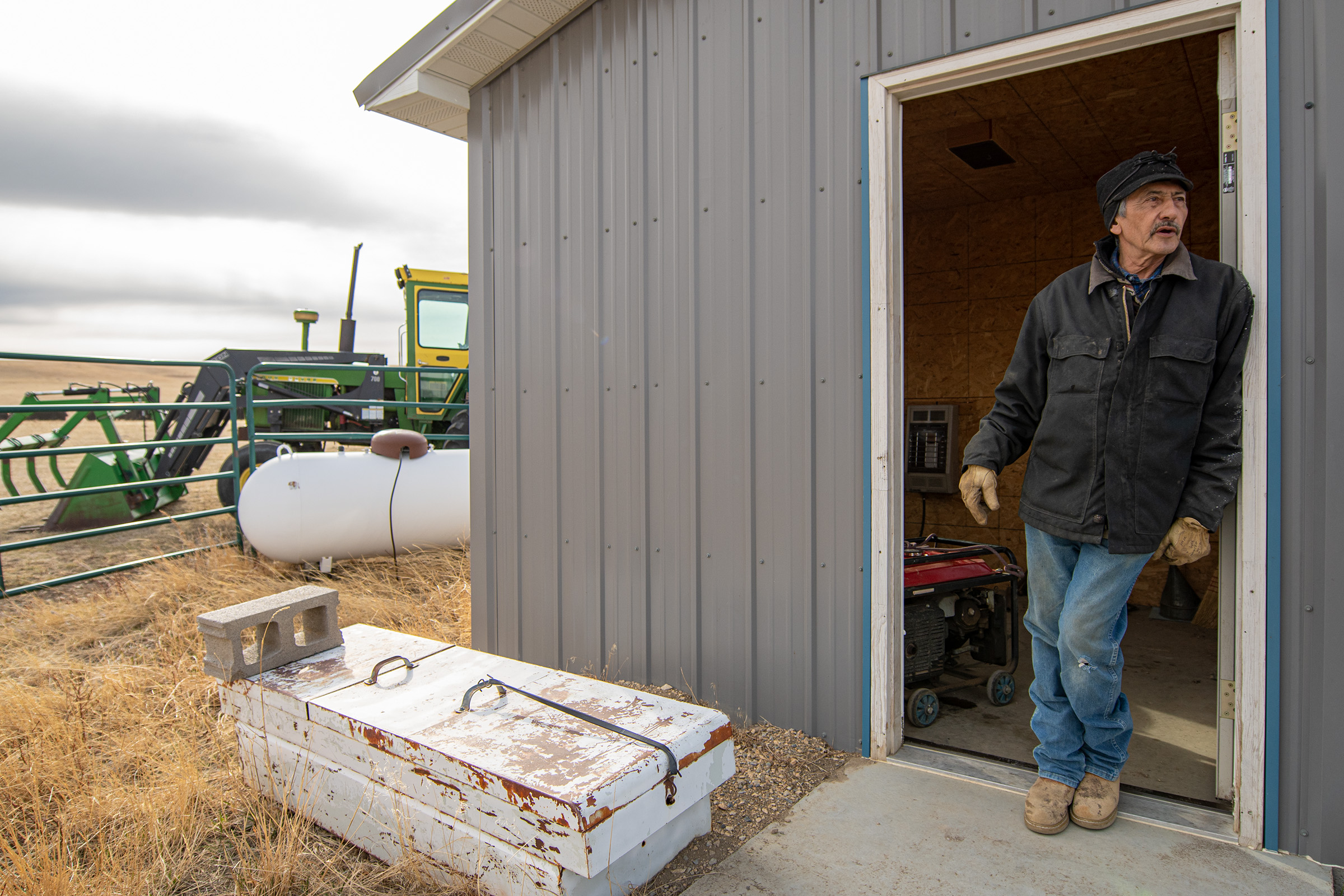

When Jake nears the end of the line of hay, he steps away from the tractor’s roar to spread the remaining hay by hand, ensuring the cattle have space to munch. The hay is dry, but it’s purchased from elsewhere.
The Crasco Ranch typically yields 60% of the hay needed to feed its cattle. Last year, the hay fields produced nothing.
This rise in the demand for hay coincided with a considerable price hike.
Juanita said within one season the ranch went from paying roughly $125 per ton of hay to as much as $400. The current herd needs about 750 tons of hay, a potential $300,000 expense.
Kill Eagle has also seen hay prices rise to about $300 a ton. But he has avoided buying hay at that rate by selling cattle and stretching his hay harvested last summer.
“This here’s the highest it’s ever jumped so much,” he said.
And it’s increasingly challenging for ranchers to locate hay in the state.
Kill Eagle has been looking to purchase more.
However, he cannot find a semitrailer load of hay in Montana, so he’s turned his focus to Nebraska. He was told it would cost $5 a mile to deliver it, which would total nearly $8,000 to reach his property.
1. The Crasco ranch requires about 750 tons of hay to feed its cattle throughout the year. 2. Jake Crasco prepares a round bale of hay that he will spread out to feed his cattle. Crasco purchased this bale at a significantly higher price after grasshoppers and drought decimated his hay crop last year.
Jay Bodner, executive vice president of the Mon- tana Stockgrowers Association, estimated that the lack of forage last year caused a 25% reduction in the state’s livestock.
He said many existing drought plans were “stressed” due to the severe lack of precipitation last year forcing ranchers to make early decisions like selling off cattle. In fiscal year 2021, about 881,000 cattle were sold statewide, a 21% increase from 2020 sales, according to data provided by the Montana Department of Livestock.
The lack of forage also impacted calf sale weights. Bodner said calves are normally weaned from their mothers around late October, but last year some were weaned by August and sold earlier.
“So you know, instead of selling a 650-pound calf or 600-pound calf, you’re selling a 300- or 350-pound calf,” he said.
Bodner said most of the state’s ranches are family-owned, with plans to pass them down. These ranchers have a history of dealing with drought and weather variability, he said.
“I know our Montana ranchers are extremely resilient and great stewards of the land,” Bodner said in an email. “I am confident they will manage the land in the best way possible.”
Kill Eagle saw himself as a rancher when he was younger. He plans to pass his operation to his 18-year- old son one day.
The Crascos also plan to keep the ranch alive with their grandkids taking the reins. These desires may seem oblivious to the region’s long-term drought concerns, but Juanita is well aware.
“Bottom line, people need to start making changes for the future,” she said, “because this drought not only just affects our water and our grass growing, but it has an impact on the soil.”
***
Kill Eagle has a range unit, trust land for grazing, of about 5,000 acres, which he shares with his uncle. It’s not even the largest of the reservation’s 47.
On a recent afternoon, Kill Eagle drove the range unit’s dirt roads in his silver GMC truck. Looking through the cracked windshield as the truck bounced along, the land seemed to expand into the horizon.
The area opened up to a land of muted yellow grass, sagebrush and clouds, with the dark silhouettes of the Little Rockies and Bears Paw Mountains looming in the distance. After Kill Eagle passed through a prairie dog town littered with old, sun-bleached cow bones, he soon arrived at a canyon of sorts, which is home to Mud Creek.
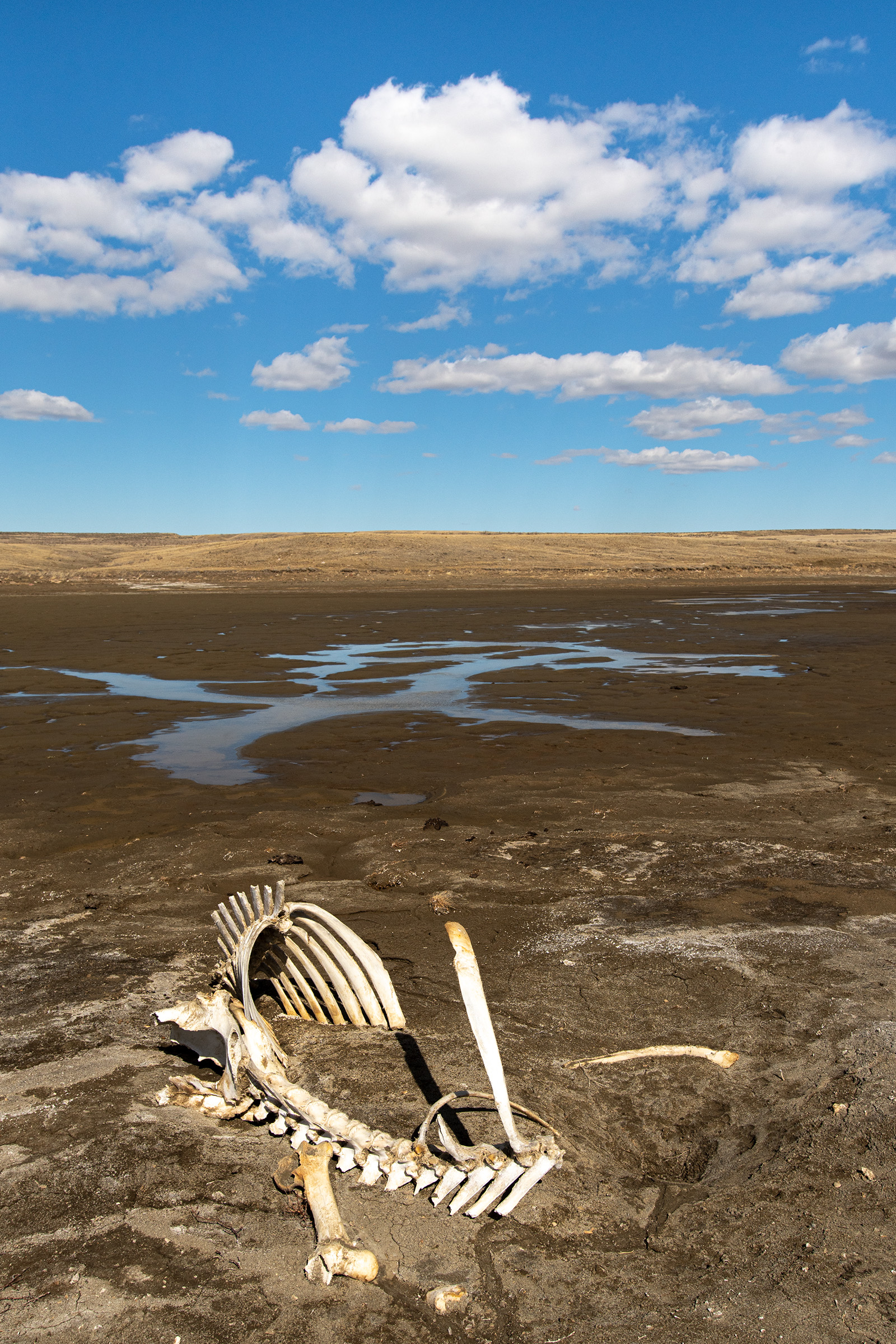
Kill Eagle said this creek sustained his cattle herd last summer, with its occasional watering holes. How- ever, other ranchers weren’t as lucky.
The tribes spent close to $100,000 on water hauling last summer, according to Warren Morin, the Fort Belknap Indian Community Council’s land committee chairman that year.
However, it’s unclear how much that service will be available to ranchers this summer.
Tribal president Jeffrey Stiffarm said the government was restricted from using American Rescue Plan Act funds to haul water, so money was taken from other programs, including volunteer fire. This expense prevented the government from providing feed over the winter, according to Morin.
Kill Eagle drove through the flatland and approached a reservoir near Mud Creek that had some snowmelt puddled in its center. On its southwestern edge was the skeleton of a cow that had gotten caught in the mud and died in a previous dry year.
This reservoir, a scene of death and drought, has seen floods, too. In 2011, a flood washed out reservoirs meant to hold thousands of gallons of water for livestock, according to Kill Eagle.
The long-term climate pattern in this portion of the state has changed a lot since then.
Months with high precipitation in north central Montana before 2000 often saw up to four inches and occasionally more. But wet months since then are struggling to reach that, according to data from the Western Regional Climate Center.
1. Koulee Crasco hangs on a gate outside his family’s ranch on the southern side of the Fort Belknap reservation. His family has ranched there for generations. 2. Jake Crasco spreads out the remainder of the round bale with his feet.
Jim Brusda, a lead meteorologist with the National Weather Service in Great Falls, said drought in the state’s northcentral region is only getting worse, with many months of precipitation well below average.
Brusda said in recent years the driest months received about one-fourth to one-half inch of precipitation on average, which has little impact, especially in the summer. “We need our wet years to be five inches or six-inch rainfall (per month),” he said about the months from April to June. “Our wet years are running around two inches or three inches.”
He also pointed out that in years of both El Niño, when the ocean is warmer, and La Niña, when it’s colder, there’s generally below average precipitation in the region. This suggests the region needs more years when ocean temperatures remain steady.
In 2020 the National Oceanic and Atmospheric Administration cited a passage from the book “El Niño Southern Oscillation in a Changing Climate,” which predicted extreme El Niño and La Niña occurrences may become more common due to climate change.
Extreme El Niño and La Niña occurrences may start happening each decade instead of every two de- cades in “aggressive greenhouse gas emission scenarios,” according to the article posted by NOAA in 2020.
***
The current situation has further inflamed tensions between the Bureau of Indian Affairs and ranchers on Fort Belknap. Many ranchers pay the BIA annually for range unit leases for summer grazing.
The BIA granted the Crascos more time this year to determine if the water on the land is enough to sustain their livestock.
Currently, the Crascos pay more than $100,000 for the land they lease via range units and private leases.
Depending on the state of the land, they could either keep their range units this summer or sell more cattle and move onto smaller pastures. If their cattle return to the range units and there is insufficient water, the Crascos could be out tens of thousands of dollars and have to move their cattle.

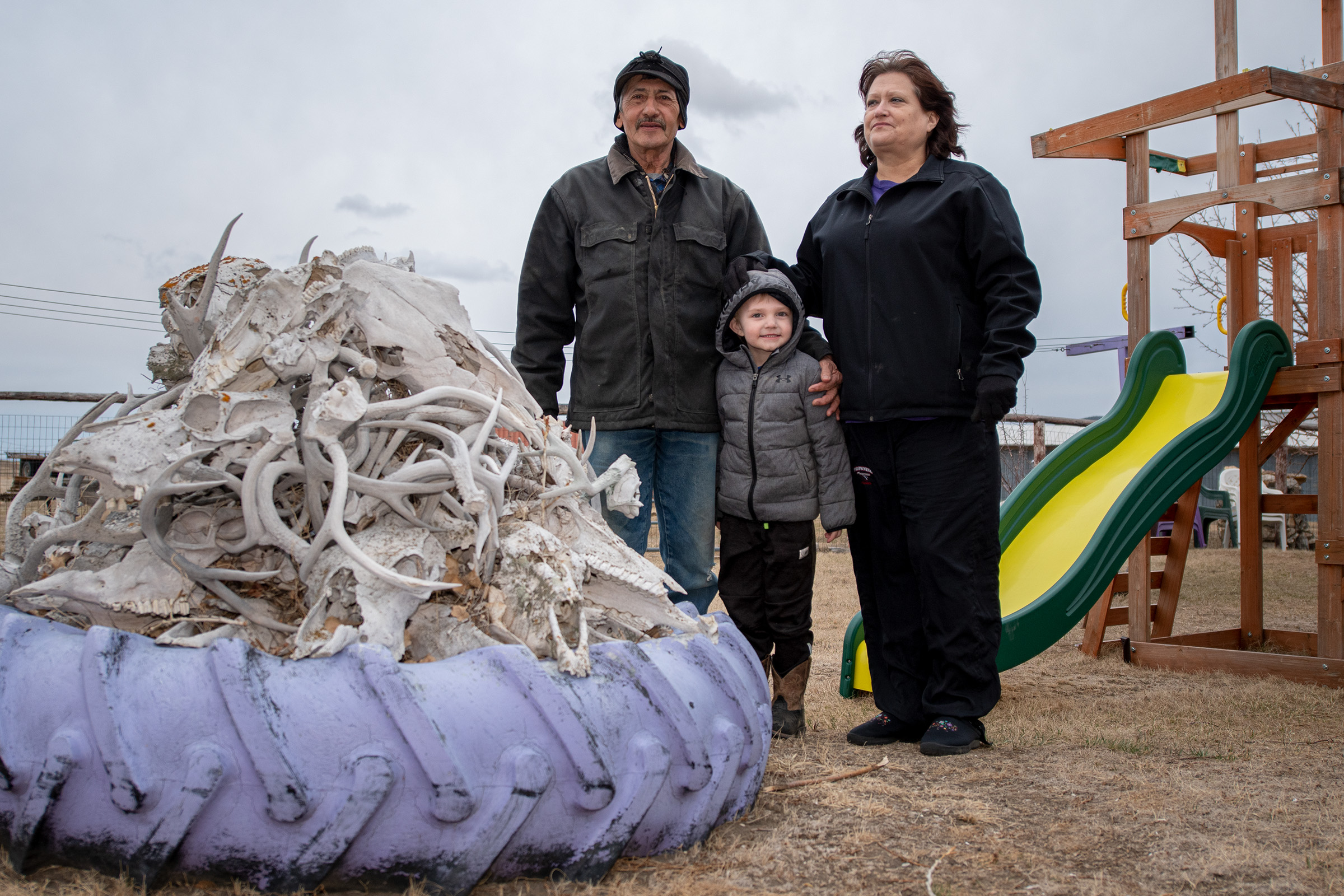

Mark Azure, the Fort Belknap Agency BIA superintendent and former tribal president, said a soil conservationist from the regional office surveyed 10 of the units last fall and found the land was suitable for grazing.
But Morin, a council member and self-described outdoorsman, disagreed with those findings, saying some units in the reservation’s western side may have to be closed.
Azure said the agency plans to examine the units again before the fall when the weather cooperates.
Tribal reservations are typically held in trust by the BIA but there’s disagreement about the agency’s role. Some ranchers assert that the BIA has a responsibility to provide land with water, while Azure insists the agency is not responsible for providing water to range unit permittees.
He is aware of all the criticism lofted at the BIA.
“I grew up with some of those guys, I know those guys,” he said. “I feel for them. But you know, I can only do what I can do.”
These efforts included purchasing some stock tanks for the range units, according to Azure.
He said a problem is low funding, which contributes to less staff. Years ago, the agency had a staff of roughly 40 to 45 for the reservation. Now that’s down to about 21, according to Azure.
Azure said there are programs through the federal Farm Service Agency and Natural Resources Conservation Service to help decrease the cost of water development. Kill Eagle is aware of these programs, but he said costs to repair the washed-out reservoirs and set up a watering system were too high.
Kill Eagle is primarily frustrated with the BIA but also with the tribal government. He said neither understands the needs of ranchers.
“They just care about themselves,” he said. “All they ever worry about, they don’t have any interest in this land. All they care about is paychecks and pay the rent, mow the lawn. They don’t know what it’s like to live out in the country.”
Kill Eagle, who ran unsuccessfully for the tribal council last fall, said he ran because the council needs to better represent ranchers and farmers.
Stiffarm, who was elected to a four-year term last fall, sits behind his dark brown desk. Behind him is a painting of a bull elk in the foreground and the flowing Missouri River off in the distance with blue and orange skies.
Joey Kill Eagle, an enrolled member of the Aaniiih Tribe, overlooks Mud Creek. The creek provided enough water for his cattle during last summer’s driest months.
Stiffarm, wearing a purple golf shirt and gray vest, mostly listened as council member Morin discussed the current situation with the drought. He shifted periodically, his chin occasionally resting in his hand.
He said the BIA could assist more with water development, but also added that the local and statewide BIA officials are middlemen. The best way to get support is by lobbying for it in Washington, D.C., Stiffarm added.
***
Jake Crasco, a member of the Nakoda tribe, is not optimistic about the ranchers still in business if the drought continues.
“If this thing goes on another year, there’ll hardly be anyone around,” he said.
Jake, a soft-spoken man with a graying mustache, is always looking to improve his ranch through a systematic approach, whether it’s the maze-like system in his barn to deal with calving heifers or his summer plan to install frost-free tanks for his well. The yellow- ish gloves and boots he wears have been blackened over time with work.
As night nears on the evening of March 20, he comes inside from the lip-chapping wind for a quick dinner of homegrown beef, carrots and potatoes, along with store-bought bread and horseradish. Dinner is set on the Crascos’ green-gridded dining room table with colorful star quilts folded off to the side and a bright teal wall overlooking it all.
One of the pair’s young grandsons joins them for dinner, a yellow tablet not far from him. Juanita refers to him as one of the “fifth generation ranchers.”
Before long, Jake heads out into the crisp twilight to feed more cattle. He’s carrying on a family tradition Juanita is determined to keep alive.
“We’re not going to quit,” she said. “We will not quit.”
A SPECIAL PROJECT BY THE UNIVERSITY OF MONTANA SCHOOL OF JOURNALISM
ADDITIONAL FUNDING SUPPORT FROM THE GREATER MONTANA FOUNDATION
READ MORE:

Previous